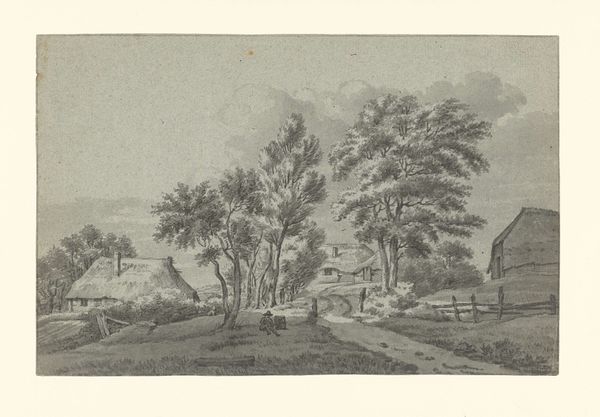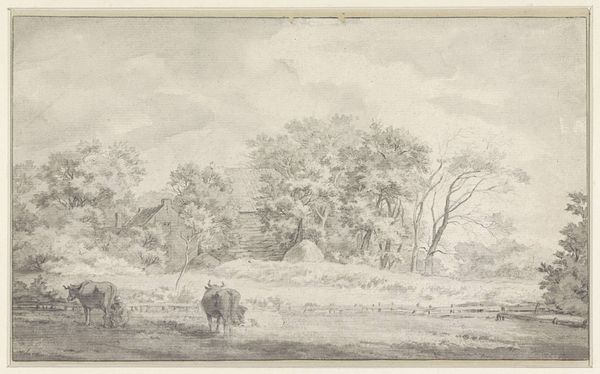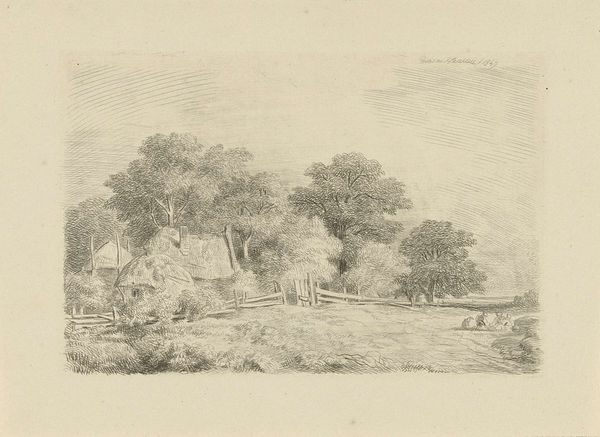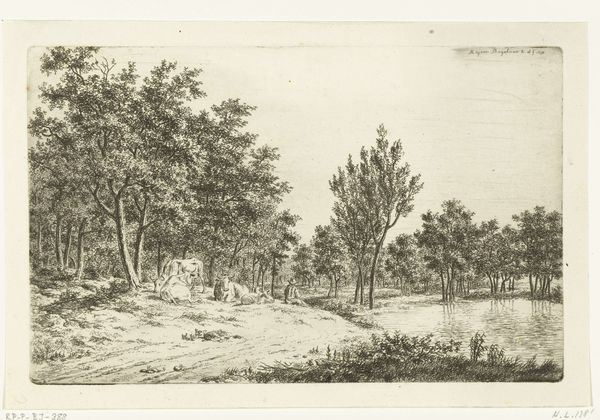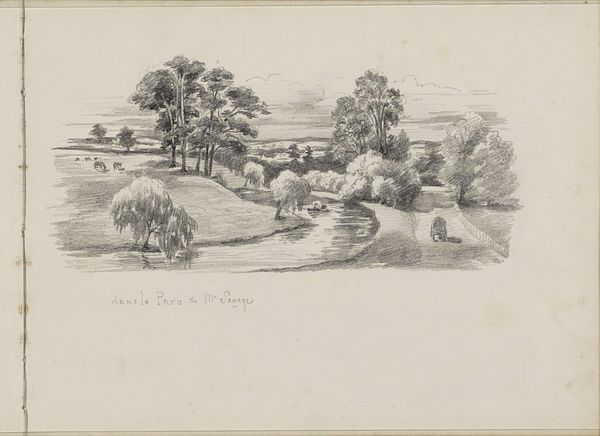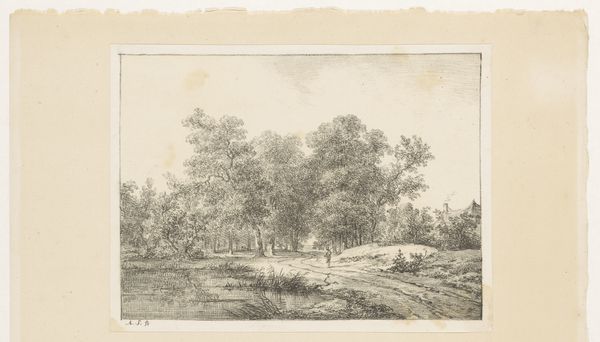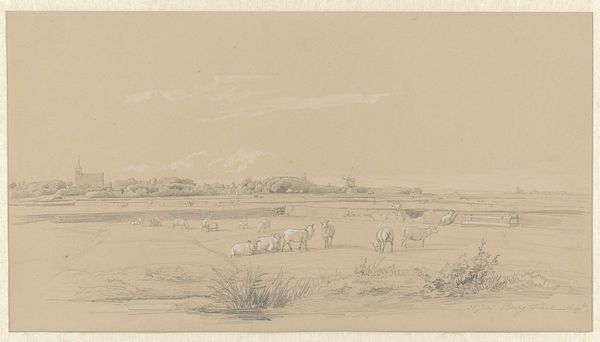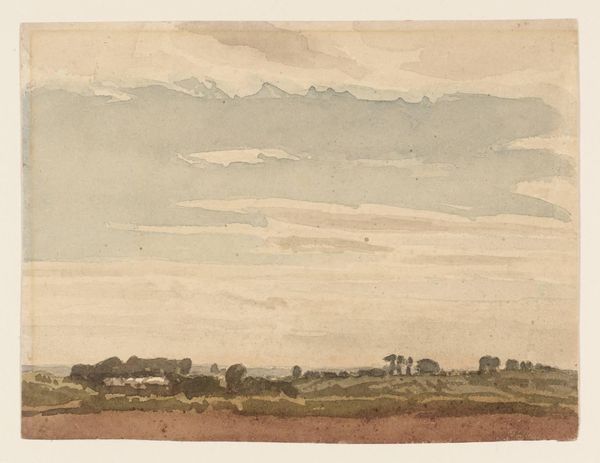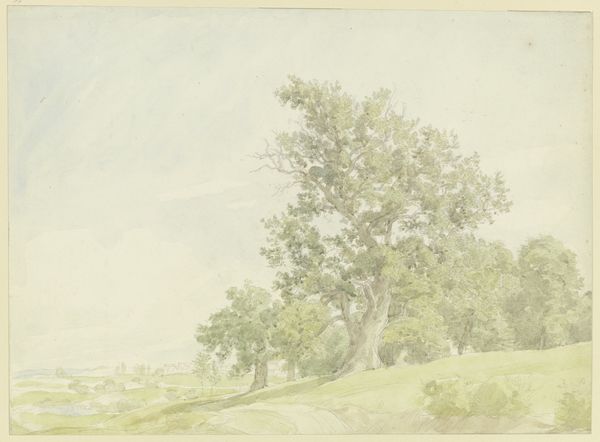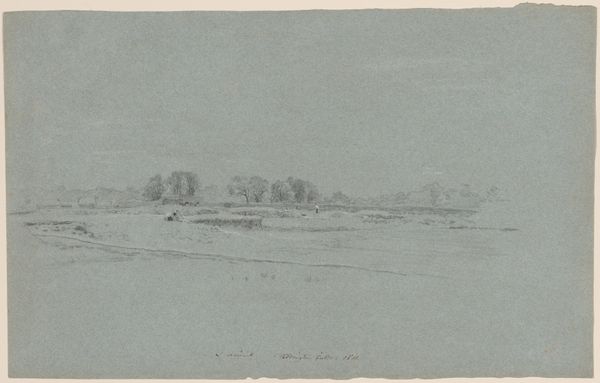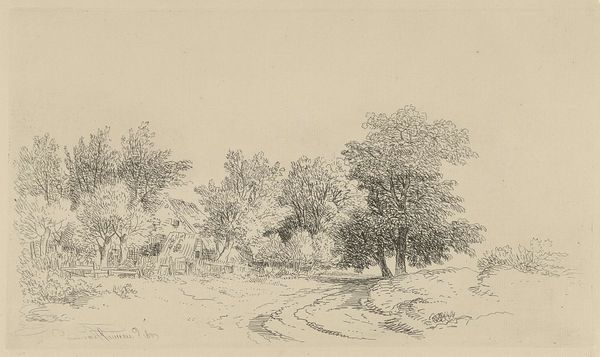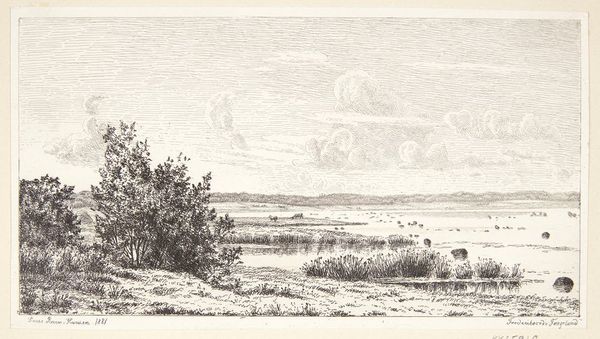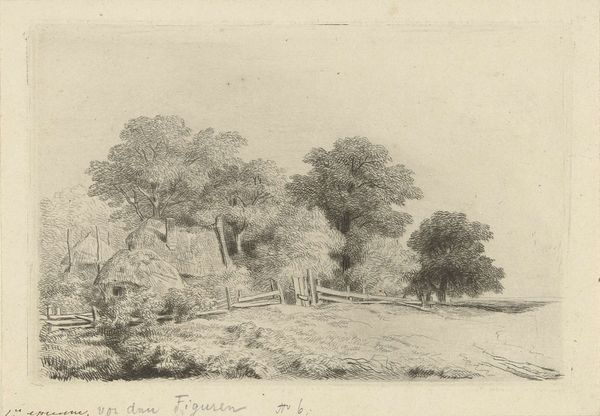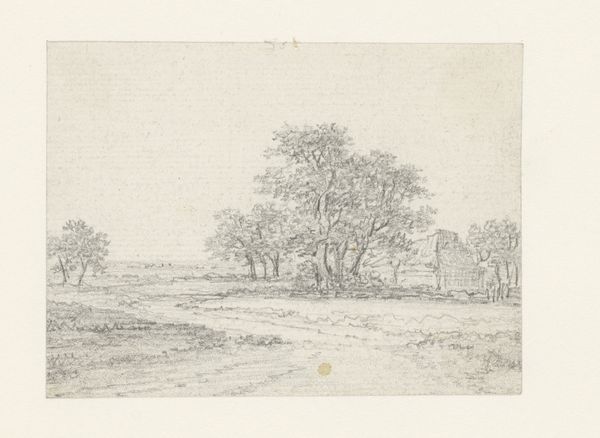
Dimensions: height 198 mm, width 327 mm
Copyright: Rijks Museum: Open Domain
Curator: Welcome! Here we have "Landschap in de omgeving van Wageningen" or "Landscape in the surroundings of Wageningen," made between 1755 and 1818, currently residing here at the Rijksmuseum. It’s crafted with watercolor and pencil by Egbert van Drielst. Editor: My first impression is serenity. There's something profoundly calming about the soft palette and open space. It feels vast, even though it’s a relatively small work, the colors create a sensation of openness and tranquility. Curator: Interesting, especially since the materiality suggests it could easily be reproduced or was, in fact, an original work used in producing subsequent works through different labor and artistic conditions. Consider the artist’s choice to render this expanse using delicate watercolor and pencil marks. What does this signify? Perhaps a way of simplifying the landscape to appeal to a middle-class who craved a scene far removed from their industrialized and urban experience. Editor: That reading focuses on consumption. I lean towards thinking about a more symbolic use of space. The vast, largely untouched landscape contrasts sharply with the tiny cottage tucked amidst the trees. Doesn't that disparity between nature and habitation carry weight? Perhaps reflecting the smallness of human concerns when measured against the timelessness of the natural world. Curator: But even the trees feel ordered. The subtle tonal shifts don’t represent a perfectly accurate portrayal of nature; instead, Van Drielst is shaping our understanding through deliberate and artistic acts. I see consumption everywhere and am interested in how the product participates in constructing specific feelings toward land that are both realistic and aspirational. The piece exists because someone can acquire and own it. Editor: Maybe, but I am caught by that one house. The house could be read as a representation of "Heim," a symbol of home and hearth. Even in Romantic landscapes, domesticity remains a faint yet persistent image. Is Van Drielst reminding us that even when we are contemplating the sublime, we remain tethered to human concerns and memory? Curator: True, but this representation participates in how rural or domestic production and materiality were packaged. Were similar works consumed in spaces far removed from nature, allowing an industrialized people the ability to purchase their memories of rural heritage, especially if the image itself speaks of craftsmanship or fine art practices? Editor: Fascinating to consider these layers – artistic intervention, the tension between untouched nature and human habitation, memory. I now look at the work as a negotiation between the real and ideal. Curator: Yes, and in these layered meanings, we see how the very idea of "landscape" is produced, consumed, and negotiated.
Comments
No comments
Be the first to comment and join the conversation on the ultimate creative platform.
